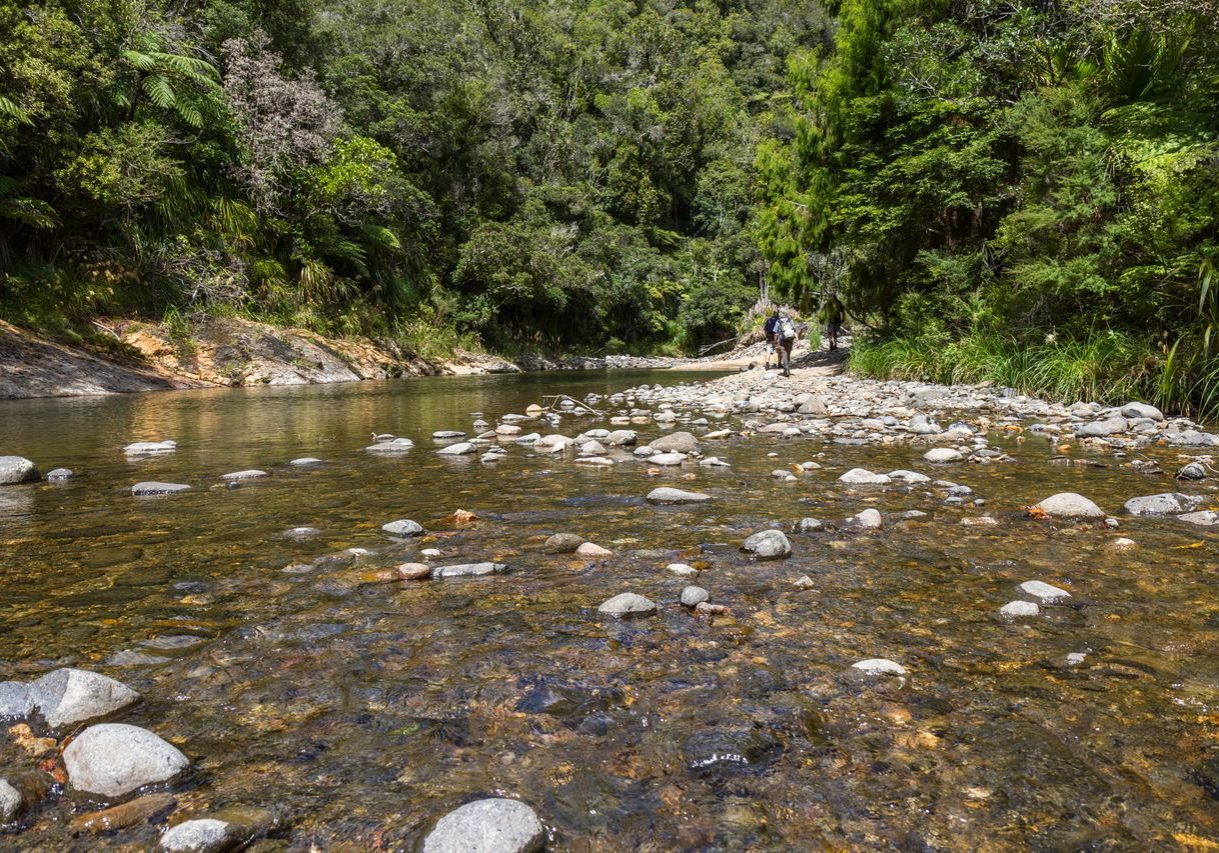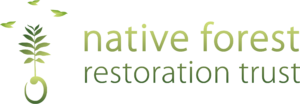Waiwawa

Location
The 61 ha Waiwawa Reserve is located in the Coromandel Ranges at the highest point on the Tapu Coroglen Road. It is adjacent to #1438 Tapu Coroglen Rd (Haynes’ “Summit Ranch”). The Reserve is on the southern side of the Tapu Coroglen Road with the DOC Conservation Park to the east, the Haynes property to the west and the Waiwawa River forming the southern boundary.
History
Prior to the Trust’s purchase of this reserve in 2005, the land was a part of the Summit Ranch and stock grazed the area. Prior to the original bush cover being cleared for farming extensive kauri logging had occurred.
Vegetation
The area is almost entirely modified primary forest except where there is secondary forest along one boundary, dominated by rata – podocarp/tawa forest. The manuka-broadleaf forest areas have been most recently and extensively cleared while the kauri-tanekaha forest ridges show least modification. The rata-tawa forest types have recovered well and reflect the ability of this forest type to regenerate quickly from broad devastation. Abundant manuka and broadleaf seedlings are appearing on retired farmland.
Wildlife
The endangered Hochstetter’s frog is present within the reserve. The original forest would have supported high numbers of kereru, kaka, kakariki, kokako, tieke, and North Island brown kiwi, but of these only kereru are now present. Kokako have only recently become locally extinct in this ecological district. The long-tailed bat is considered to be present in the Thames Ecological District but no bats have been reported for this reserve. No aquatic faunal survey has been undertaken. The natural state of the forest cover and the relatively good water quality of the catchment would indicate that the aquatic fauna is expected to be typical of other similar watercourses in the Coromandel Ranges, with native fauna being comparatively intact. Invertebrates have not been specifically studied but would be expected to be representative of those found throughout the Thames Ecological District.
Special Values
The reserve and the adjoining Haynes property are ranked by Environment Waikato as the fifth-equal Key Ecological Site (KES) for the Coromandel Ecological Region, and the top ranked site for the Thames Ecological District. KES’s are regionally significant ecological sites on private land that are identified so that Environment Waikato can prioritise providing assistance for pest control to maintain their ecological values.
Facilities
There are no facilities within the Reserve and visitor access is only with prior approval. Entry is at your own risk.
Management
Pampas is the most significant environmental weed within the reserve, although not in high densities, with Selaginella also present. Future natural values would be threatened by the introduction of environmental weeds from footwear, road frontages or residential and farming properties.
Animal pests include possums, goats, pigs, mustelids and rodents. Goats are a significant pest of the surrounding DOC estate and are controlled, although they will persistently re-invade DOC estate and the reserve. All these animals pose a threat to the endangered flora and fauna of the reserve. Another threat is the Batrachochytrium dendrobatidis fungus. All possible measures will be taken to minimise the risk of this fungus being introduced or spread within the reserve. Prior to visiting the reserve visitors’ footwear must be disinfected with “Virkon” or “Trigene”, obtainable from veterinary outlets.
No hunting without the express permission of the Native Forest Restoration Trust
Kauri
The reserve is home to kauri trees, which only grow in New Zealand. Kauri are threatened with extinction by a disease commonly known as ‘kauri dieback’ which is spread between trees by people carrying tiny amounts of infected soil on their footwear and other gear.
To help protect kauri, visitors must contact the Trust to obtain prior approval to visit Waiwawa Reserve.
When visiting the reserve, these guidelines should be followed:
- Clean all soil off your footwear and other gear (including hiking poles, clothing and bags), every time you enter or leave a forest area. This is to avoid introducing kauri dieback disease to a new area, or moving it from an area where the disease is. A pinhead of soil is enough to spread the disease. Do not use water (including stream water) to clean, unless it will be captured in a sewer, for instance – the pathogen that causes dieback is a water mould, and is activated by water.
- Use disinfectant only after you have removed all the soil. Spray it on all the areas that have come into contact with the ground.
- Be aware of the location of kauri within the reserve and stay away from them as much as possible. A kauri’s roots are extremely delicate, grow close to the surface, are susceptible to disease, and can grow outwards 3x as far as a tree’s branches).
- If you use hiking poles, use rubber feet on your poles to minimise the amount of soil your poles pick up.
- Never assume anywhere is free of kauri dieback. Infected trees may not show it.
- Spread the word within your networks about the need for visitors to help stop the spread of kauri dieback. Everyone has a part to play in saving kauri.
More information on kauri dieback is available at https://www.kauriprotection.co.nz/
How to Get There
Visitors are required to contact the Trust to obtain prior approval to visit this reserve.

